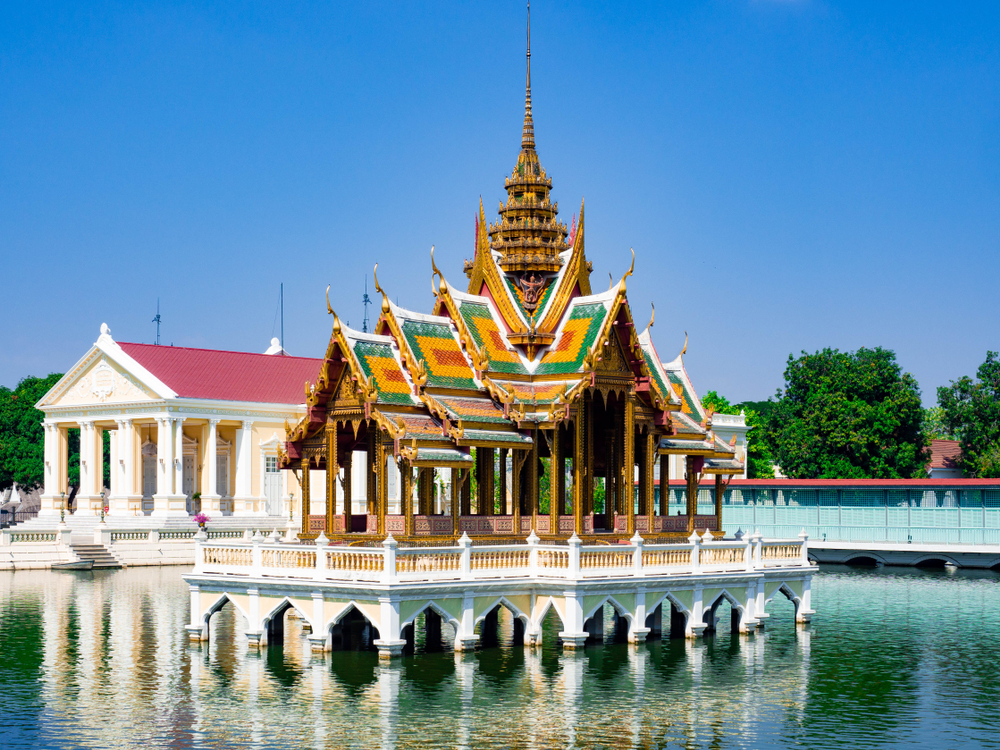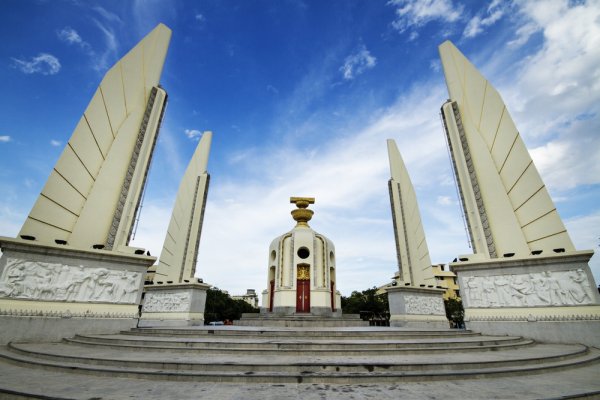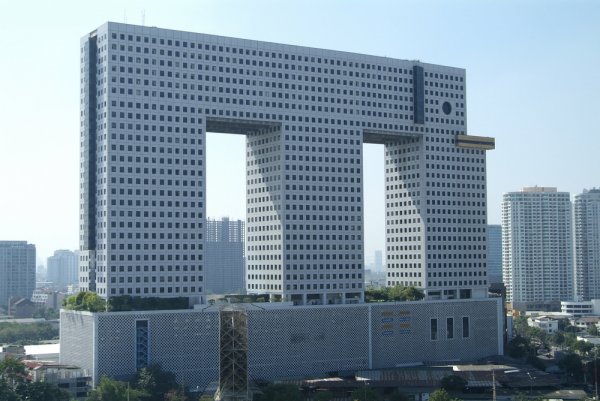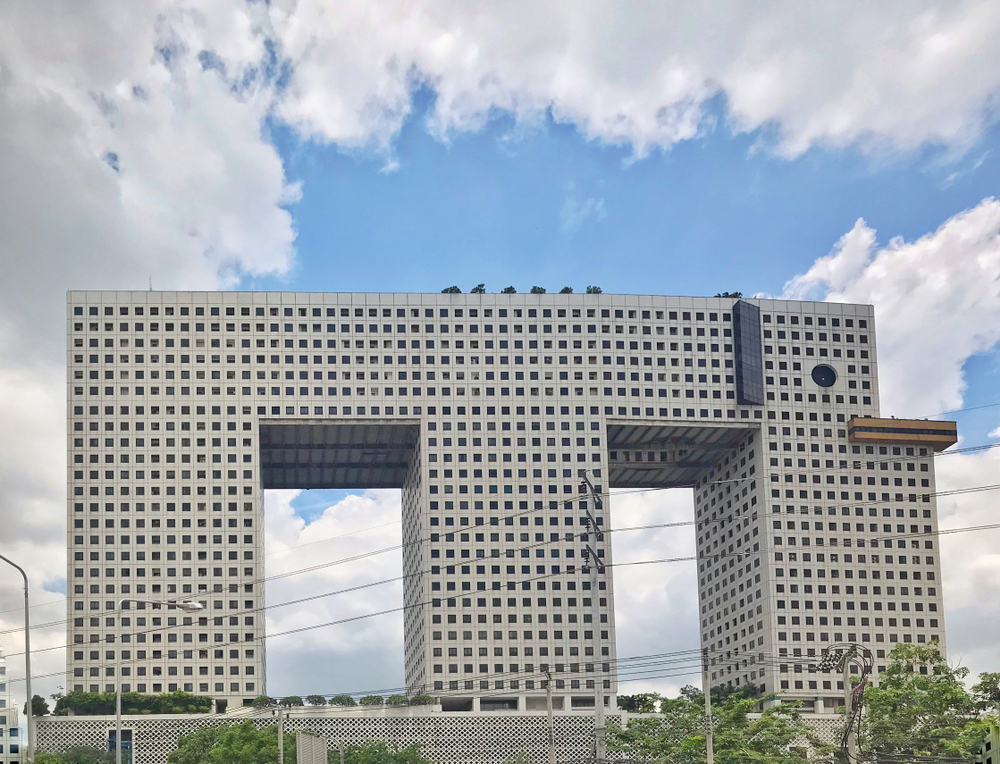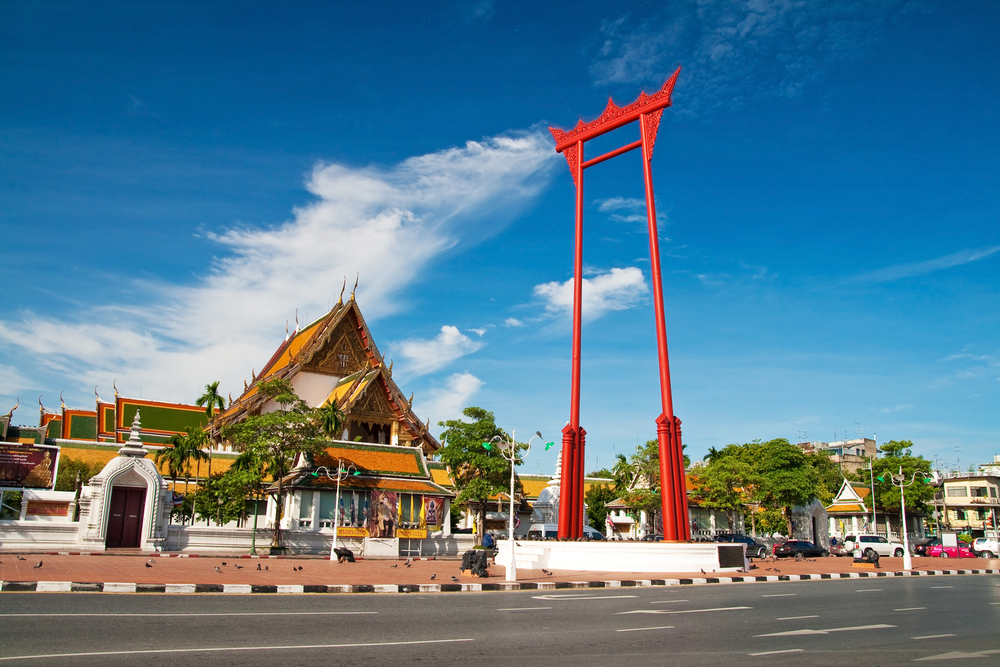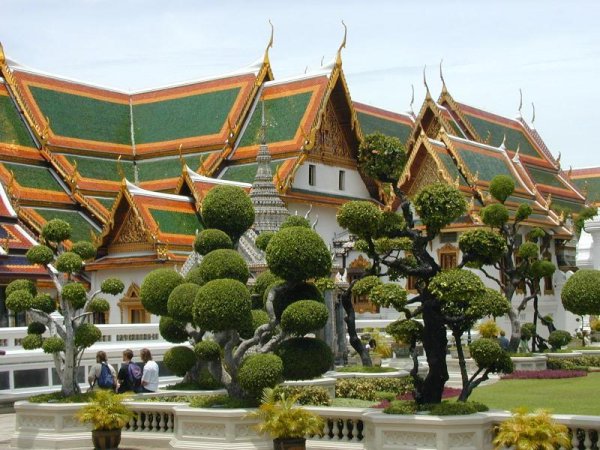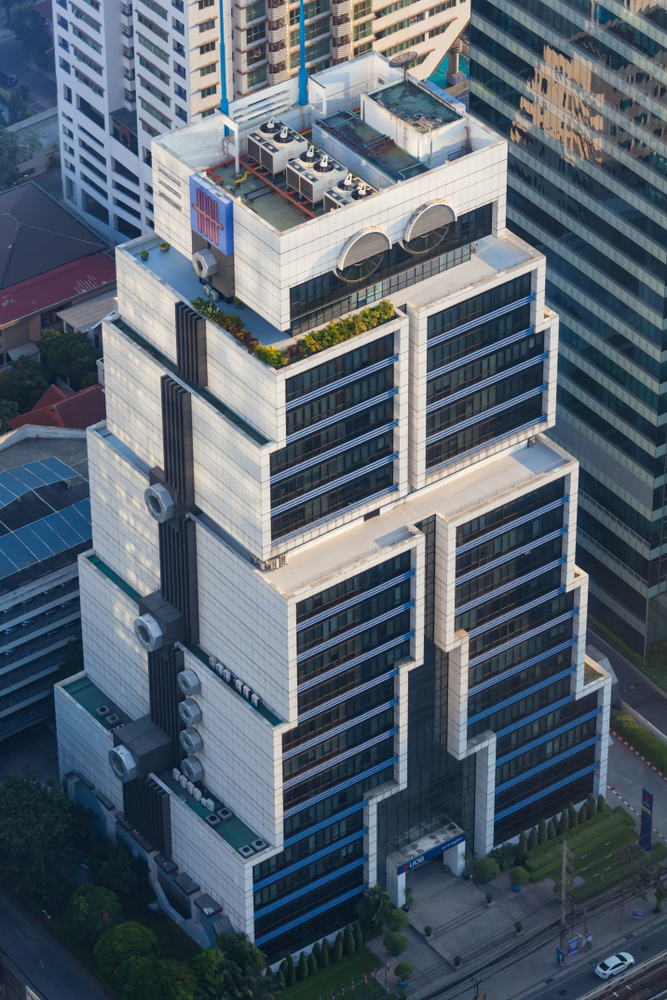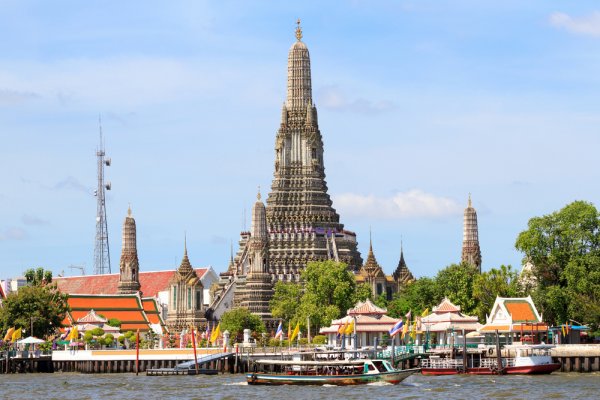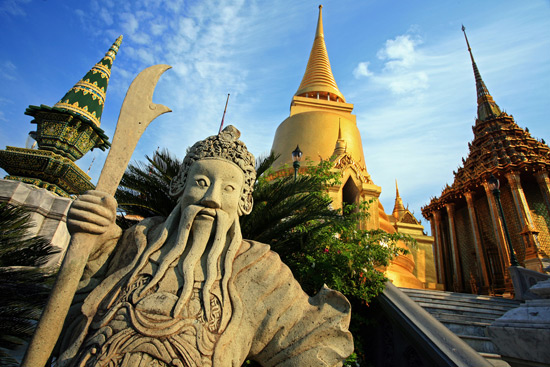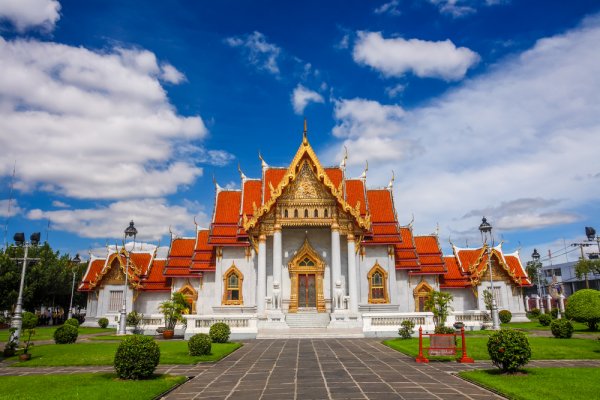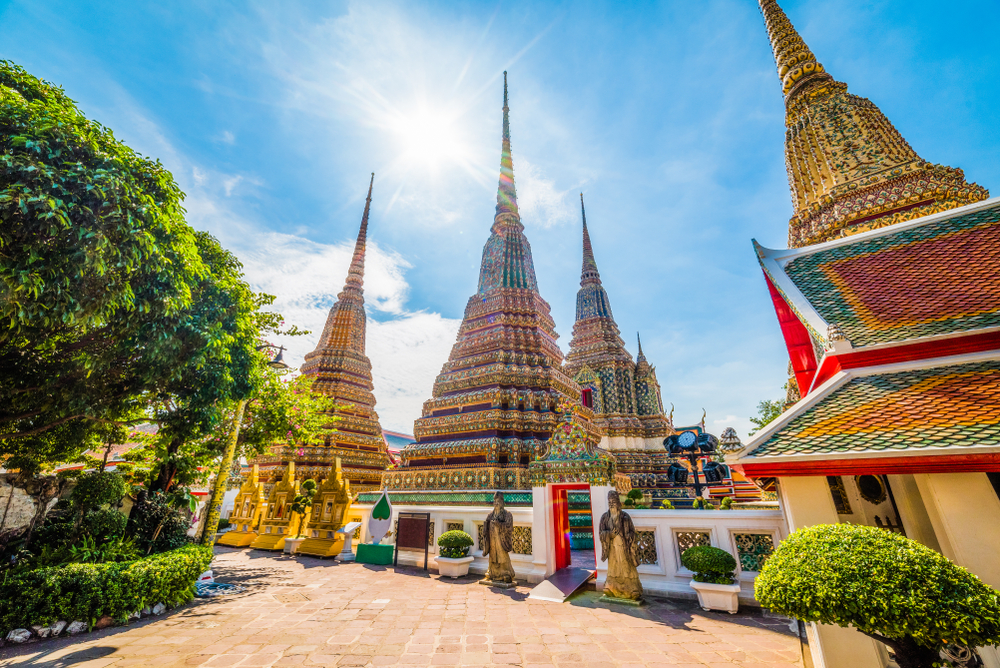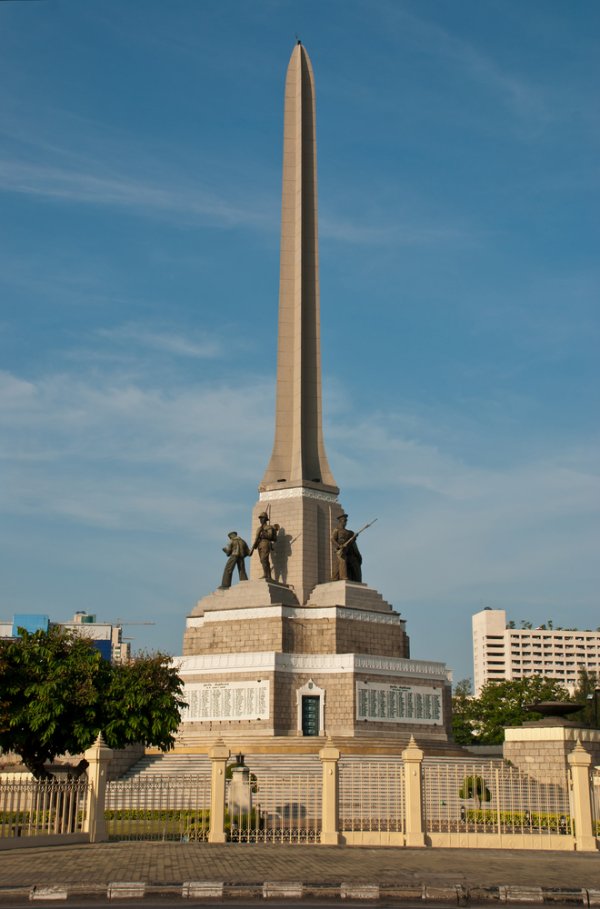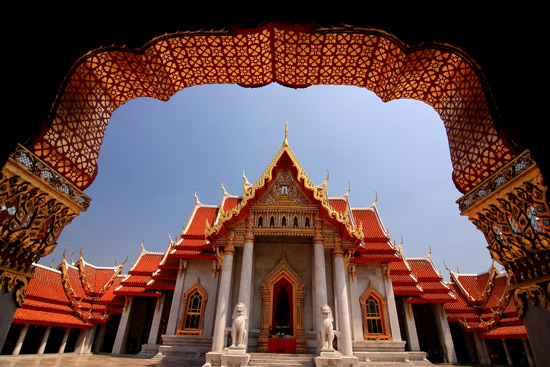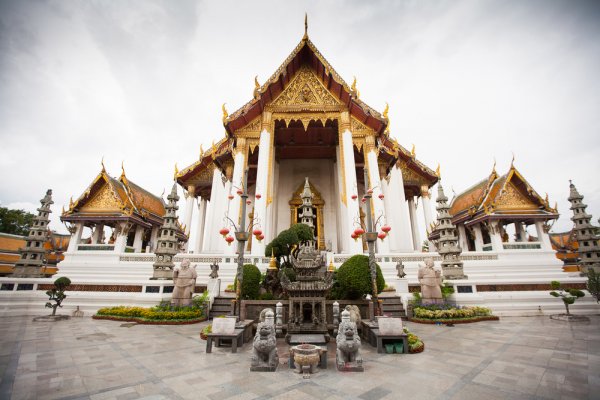Points of Interest
Bang Pa-In Royal Palace
พระราชวังบางปะอิน Chao Phraya riverbank, Ban Len
Phra Nakhon Si Ayutthaya, Thailand
The Bang Pa-In Royal Palace, originally built in 1632 by King Prasat Thong, served as the summer residence of Thailand's kings. The present palace complex was renovated by King Mongkut and further enhanced by his son King Chulalongkorn during the 19th century. Its prominent features include the Warophat Phiman (Excellent and Shining Heavenly Abode), Wehart Chamrun (Heavenly Light Palace), Aisawan Thiphya-Art (Divine Seat of Personal Freedom), Saphakhan Ratchaprayun (Assembly Hall for Royal Relatives), Ho Withun Thasana (Sages' Lookout Tower), oil paintings depicting significant events in Thai history and scenes from Thai literature. The Palace is surrounded by vast gardens, small lakes, and beautiful landscapes.
Democracy Monument
อนุสาวรีย์ประชาธิปไตย Ratchadamnoen Avenue and Dinso Road
Bangkok 10200, Thailand
Built in 1940, the Democracy Monument commemorates the June 24, 1932, military coup that led to the establishment of a constitutional monarchy. Erected on a 24-meter-radius (79 feet) base, it houses a carved representation of the 1932 Thai Constitution atop two golden offering bowls on a three-meter-high (10 feet) circular turret with six gates, each embedded with a sword. This turret is surrounded by four 24-meter-high (79 feet) wing-like structures, symbolizing the four branches of the Thai armed forces involved in the historical revolution, and 75 small cannons. The lower parts of these wings feature Western dragon-shaped fountains and bas-reliefs that personify the "Soldiers Fighting for Democracy," "Thai People," and "Balance and Good Life."
Elephant Tower
ตึกช้าง 26 Phahon Yothin Road
Chatuchak District, Bangkok, Thailand
Constructed in 1997, the Elephant Tower is particularly famous for its unique architectural style. It contains three connected towers (A, B, and C), each with nearly 32 floors that make up a shape of an elephant with an eye and tusk on its right edge. Soaring to a height of 102 meters (335 feet), the structure houses a condominium and many offices.
Elephant Tower
Corner of Paholyothin and Ratchadaphisek Roads
Chatuchak District
Bangkok, Thailand
Also known as the Chang Building, Elephant Tower is an elephant-shaped high-rise building in northern Bangkok’s business district. It consists of three 32-story towers (A, B, and C) representing the elephant’s trunk and two legs. The towers are joined across the top by a horizontal seven-story-tall strip that forms the elephant’s head and body. The building holds a record for being the world’s largest elephant-shaped structure.
Giant Swing
Phra Nakhon
Bangkok, Thailand
Standing 27 meters (88 feet) tall near Bangkok’s temple complex of Wat Suthat, Sao Ching Chaa is a giant swing made from teak wood. For centuries it played a role in Hindu ceremonies until it was discontinued in 1935 after several participants fell to their deaths. Its most recent renovation took place in 2007 when six huge teak trees, approximately 200 years old, were used to construct a new swing.
Grand Palace
Na Phra Lan Road near Sanam Luang, Ko Rattanakosin
Bangkok, Thailand
Built in the late-18th century and located on the east bank of the Chao Phraya River, the Grand Palace was the official residence of the king of Thailand until the mid-20th century. It is spread over an area of 22 hectares (54 acres) and surrounded by a canal. It features a defensive wall more than a mile long, the Wat Phra Kaew temple containing the Emerald Buddha, and a museum with many Buddha images and ancient relics. The palace's many halls include the Italian Renaissance-style Chakri Mahaprasad Hall, Boromabiman Hall, Vimanmek Mansion, Abhisek Dusit Throne Hall, and Amarinda Hall.
Robot Building
191 S. Sathorn Road
Sathorn District
Bangkok, Thailand
Completed in 1987, the 20-story-tall Robot Building was designed by Thai architect Sumet Jumsai who was tasked with creating a structure that reflected the computerization of banking. The building’s different sections become smaller as they go up to create the robot’s body and two round windows on the top section resemble eyeballs. It also includes two tall antennas on the roof and large metallic-colored nuts along the sides of the building.
Temple of Dawn
Wat Arun Ratchawararam On the west bank of Chao Phaya River
No. 34, Arun Amarin Road
Thonburi Yai District, Bangkok, Thailand
Established as Wat Makok (Olive Temple) during the days of Ayutthaya, Thailand's ancient capital (1350-1767), Wat Arun is now one of Thailand's most famous Buddhist temples. The prominent features include a central towering Khmer-style prang (phallic-shaped tower) and four smaller satellite prangs decorated with seashells and porcelain pieces. Additional features include an Ordination Hall with a Niramitr Buddha image, two terraces with steep steps providing panoramic views, images of ancient Chinese soldiers and animals, Chinese-style green granite pavilions on the waterside, landing bridges, and elaborate murals of Gautama Buddha encountering examples of birth, old age, sickness, and death.
Temple of the Emerald Buddha
วัดพระแก้ว Phra Nakhon District, Bangkok, Thailand
Wat Phra Kaew, Thailand's most sacred and significant temple, houses the famous Emerald Buddha, a 75-centimeter (29-inch) image made around the 15th century. Perched high up inside a glass box, the image is believed to be a talisman of Thailand and its people. The Thai monarch clothes the image with a diamond-encrusted gold robe in summer, a solid gold robe in winter, and a gilded monk's robe in monsoon season. Many other tiny images of Buddha, a miniature model Angkor Wat, lifesize statues of the first seven kings of the Chakri Dynasty (Rama I to Rama VII), copies of Buddhist scriptures, and elaborate murals also adorn the temple.
Temple of the Fifth King (Wat Benchamabophit Dusitvanaram)
วัดเบญจมบพิตรดุสิตวนารามราชวรวิหาร 69 Rama V Road
Dusit District, Bangkok 10300, Thailand
Built around the late 19th century by King Rama V (also known as King Chulalongkorn), Wat Benchamabophit Dusitvanaram is a stunning temple. The main feature is the four-sided Ubosot, or Ordination Hall, with a Sukhothai-style bronze Buddha statue named Phra Buddhajinaraja, the ashes of King Rama V beneath it, a row of nearly 52 additional Buddha images in its cloister, and a majestic marble lion guarding its entrance. Other features of this Buddhist temple include Thai art and architecture, Italian marble, three-gabled waterside pavilion called Saphannam Chao Khun Chom Marda Samlee and a decorated door panel.
Temple of the Reclining Buddha (Wat Pho)
วัดโพธิ์ 2 Sanamchai Road, Grand Palace
Pranakorn District, Bangkok 10200, Thailand
Originally built during the Ayutthaya era and extending over 80,000 square meters, Wat Pho is the city's largest and oldest Buddhist temple. It houses Thailand's second largest Buddha image, Phra Buddhasaiyas (Reclining Buddha). The image measures 46 meters (152 feet) long and 15 meters (49 feet) high, and is ornamented with gold plating on its body and mother-of-pearl on its eyes and feet. The shrine also features an age-old school of public education on traditional Thai medicine, yoga, and massage, a working Buddhist monastery with monks in residence, plaques inscribed with medical texts, over 1,000 other gilded Buddha images, and nearly 108 auspicious scenes in Chinese and Indian styles.
Victory Monument
อนุสาวรีย์ชัยสมรภูมิ Intersection of Phahon Yothin/Phaya Thai and Ratchawithi/Din Daeng Roads
Ratchathewi District, Bangkok 10040, Thailand
A tribute to the 59 Thai soldiers who died in the 1939 French-Thai territorial dispute over Indochina's borders, the Victory Monument was constructed in 1941 by King Rama IX and is one of the city's most noticeable landmarks. Made of marble and concrete, this 50-meter-tall (164 feet) Western-style military obelisk is shaped like five bayonets clasped together, symbolizing both a sword and masculine potency. Its base features five statues in a standard Western style, designed by the Italian sculptor Corrado Feroci, that represent the Thai army, navy, air force, police, and civilian bureaucracy.
Vimanmek Palace
วิมานเมฆ Dusit Palace Complex, Near the National Assembly and Dusit Zoo
Ratchawithi Road
Dusit District, Bangkok, Thailand
Originally constructed in 1900-1901 by the royal command of King Rama V and renovated in 1982 by Queen Sirikit, the three-story Vimanmek Mansion is the world's largest golden teakwood building. It features an elaborate architecture with a strong European influence, elegant fretwork, two right-angled wings, an octagonal wing where King Rama V and his family resided, 81 rooms (including many pavilions and anterooms), many terraces, verandas, gardens, canals, cut-crystal lamps, and pathways. The items on display include a hand-carved grand piano, old photographs, art, handicrafts, and royal horse-drawn carriages belonging to the reign of King Rama V (1868-1910), antique furniture, and Thai art (including silverware, crystal ware, porcelain, glassware, and ivory).
Wat Benchamabophit Dusitvanaram
Marble Temple 69 Rama V Road
Dusit District, Bangkok, Thailand
Built in the late-19th century by King Rama V (also known as King Chulalongkorn), Wat Benchamabophit Dusitvanaram is a stunning temple. The main feature is the four-sided ubosot, or ordination hall, with a Sukhothai-style bronze Buddha statue named Phra Buddhajinaraja, the ashes of King Rama V beneath it; a row of nearly 52 additional Buddha images in its cloister; and a majestic marble lion guarding its entrance. Other features of this temple include Thai art and architecture, Italian marble, a three-gabled waterside pavilion, and a decorated door panel.
Wat Suthat Thepwararam
วัดสุทัศนเทพวราราม At the center of Rattanakosin Island
146 Bamrung Muang Road
Phra Nakhon District, Bangkok, Thailand
Wat Suthat Thepwararam, constructed around the 19th century during the Chakri Dynasty, is a royal Buddhist temple. The main Buddha images at the shrine include Phra Puttatri Lokachet, the huge bronze-cast Phra Sri Sakyamuni, Phra Buddha Trilokachet in the Ubosot (Ordination Hall), Phra Buddha Setthamuni in Sala Kan Parien (Meeting Hall), Phra Wihan Luang, Phra Wihan Kod, and 156 other miniature images. The shrine also features several Chinese pagodas representing the 28 Buddhas born on the earth, Satta Mahasathan (Seven Places) symbolizing the places where Lord Buddha resided after enlightenment, carved door panels, and murals of the Rattanakosin period.
Copyright © 1993—2025 World Trade Press. All rights reserved.

 Thailand
Thailand 